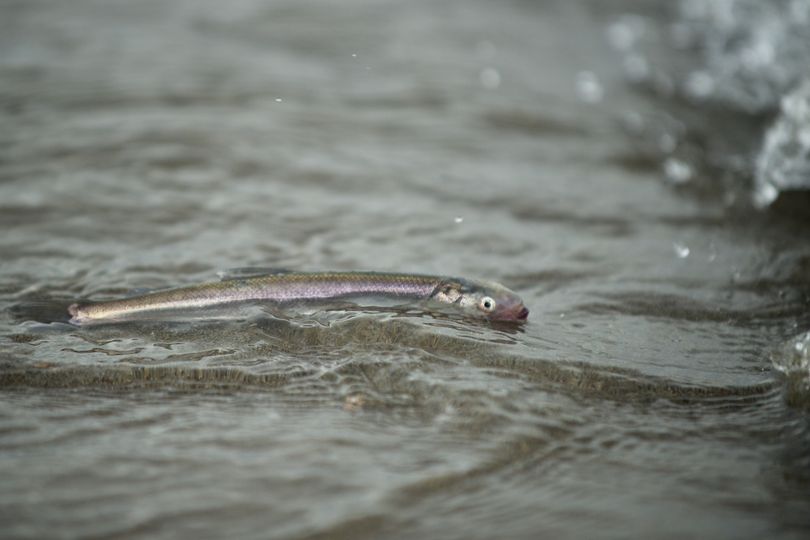Smelt making comeback in Columbia system

FISHING -- The fading art of smelt dipping -- bagging swarms of the oily ocean fish with long-handled nets as they migrate into rivers -- may be up for a revival. That's good news for all sorts of fishermen, since smelt not only are human food source but also an important prey base for sport fish.
Click "continue reading" for the scoop, so to speak, from Allen Thomas of the Columbian.
By ALLEN THOMAS
The Vancouver ColumbianA limited resumption of sport and commercial smelt harvest from the lower Columbia River is being investigated by the Washington and Oregon departments of Fish and Wildlife.
"Just being optimistic, I think we'll have something," Ron Roler, Columbia River policy coordinator for the Washington Department of Fish and Wildlife, told the bistate Columbia River Recreational Advisor Group this week.
Smelt, also called eulachon, were listed as threatened by the National Marine Fisheries Service in May 2010. Commercial sale of smelt was prohibited in December 2010 and sport dipping banned in January 2011 by the two states.
Prior to the federal listing, Washington and Oregon allowed brief commercial fisheries to gather information about the strength of the run. Netters were allowed to fish from 7 a.m. to 2 p.m. Mondays and Thursdays during January, February and March in 2010.
Only a few commercial fishermen have smelt nets and the two-day-a-week season was little more than a test fishery. About 3,600 pounds were landed in the first three months of 2010.Sport dipping in the Cowlitz River was allowed from 7 a.m. to 3 p.m. Saturdays only in February of 2010 with a 10-pound limit.
Roler said if there is a fishing resumption it would be for both recreational and commercial harvesters."We would probably use the same strategy as was used before listing,'' he said.
In 2013, the lower Columbia had a huge smelt run for the first time in many years. By March, there was a 20-mile-long mass of smelt downstream of Longview. Smelt carcasses littered the Columbia River beaches.
Videos of plentiful smelt in Oregon’s Sandy River were posted online.
So many smelt were in the lower Columbia, they even were accused of slowing the spring chinook salmon bite by sportsmen.
Sampling in 2012 for smelt larvae in the lower Columbia River was third best in 18 years. Sampling for 2013 larvae is just being completed. The sampling serves of an indicator of how successfully the smelt population spawned that year.Although smelt are listed, there is no federal take prohibition, Roler said.
The states are working with federal fishery officials to have limited seasons as a means to collect information on smelt abundance in the lower Columbia.
